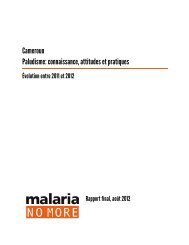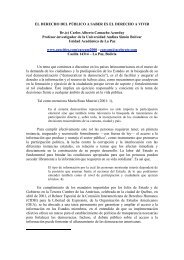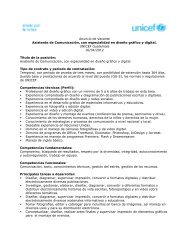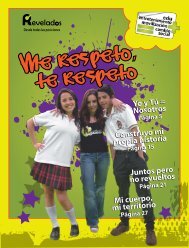to download the 38-page evaluation - The Communication Initiative ...
to download the 38-page evaluation - The Communication Initiative ...
to download the 38-page evaluation - The Communication Initiative ...
You also want an ePaper? Increase the reach of your titles
YUMPU automatically turns print PDFs into web optimized ePapers that Google loves.
Figure 4: <strong>The</strong> C-Change Socio-Ecological Model (SEM) 26<br />
Ecological models such as those featured above, and many additional communication and<br />
sociological <strong>the</strong>ories, 27 suggest that interventions aimed solely at individual ―common citizens‖ are<br />
insufficient for fostering behavior and social change. One must include in <strong>the</strong> design of social change<br />
interventions mechanisms for reaching influential individuals at <strong>the</strong> community level and at <strong>the</strong> national<br />
level and one should also aim <strong>to</strong> shape public opinion more broadly through interpersonal and mass<br />
media channels.<br />
PDEV media programming in Niger and Chad can be explained using ecological models as a<br />
conceptual guide. Sustained social change is increasingly conceived of as achievable only by simultaneous<br />
interventions at multiple levels of society—individual, community and national/political. PDEV media<br />
programming is a robust, ecological approach <strong>to</strong> social change. As such, it is designed <strong>to</strong> have impact at<br />
multiple levels. In <strong>the</strong> 2010 mid-line <strong>evaluation</strong> and <strong>the</strong> recently conducted large-scale quantitative endline<br />
surveys (early 2011), impact has been decisively demonstrated at two levels—individual and<br />
community. This impact has been achieved through three years of mutually reinforcing activities that<br />
26<br />
<strong>The</strong> source of this graphic is C-Change Learning Package for Social and Behavioral Change <strong>Communication</strong> (V.2),<br />
Module 0, p. 10. <strong>The</strong> C-Change socio-ecological model is adapted from McKee, Manoncourt, Chin and Carnegie<br />
(2000), Involving People, Evolving Behaviour, Southbound/UNICEF.<br />
27<br />
Including Diffusion of Innovations (Rogers 2003), Social Learning <strong>The</strong>ory (Bandura 1997), Agenda Setting<br />
(McCombs and Shaw 1991) and Social Convention <strong>The</strong>ory (Schelling 1981).<br />
9











